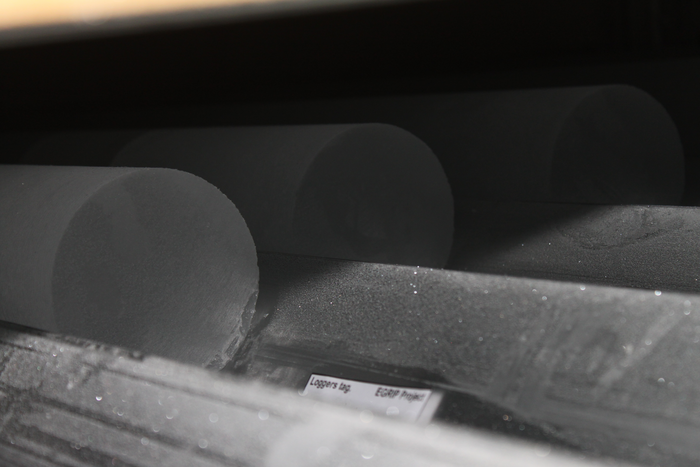Mercury, a global pollutant that is especially toxic health and the environment, is the focus of a new Italian-led study recently published in the scientific journal Nature Geoscience.

Credit: Photo by Helle Kjær – East Greenland Ice-core Project, www.eastgrip.org
Mercury, a global pollutant that is especially toxic health and the environment, is the focus of a new Italian-led study recently published in the scientific journal Nature Geoscience.
Scientists from Ca’ Foscari University of Venice and the Institute of Polar Sciences of the National Research Council (Cnr-Isp), in collaboration with other international partners, examined the relationship between past climate variations with mercury levels in the Arctic to understand what natural factors influence the biogeochemical cycling of this element.
In the context of the East GReenland Ice core Project (EastGRIP) coordinated by the Centre for Ice and Climate in Copenhagen, the research team carried out the analysis of an ice core extracted from the Greenland ice sheet, observing the dynamics of mercury between 9,000 and 16,000 years ago, during the transition from the Last Glacial Period to the current climate stage, the Holocene. The results shows that mercury levels during this transition were strongly influenced by the reduction of the sea ice coverage.
“Our study shows that mercury deposition in the Arctic tripled at the beginning of the Holocene compared to the Last Glacial Period,” explains Delia Segato, the lead author and a PhD student in Science and Management of Climate Change at Ca’ Foscari University of Venice. “Thanks to the analysis and interpretation of paleoclimatic archives and the development of an atmospheric mercury chemistry model,” Segato continues, “the study concluded that the loss of sea ice, especially the perennial one, in the subpolar Atlantic Ocean due to climate warming 11,700 years ago was the main cause of the increase of mercury deposition in the Arctic.”
Mercury emissions, carefully monitored at the international level, are not only of anthropogenic origin. The biogeochemical cycle of mercury is controlled also by several natural sources, such as
volcanic activities, as well as a multitude of physical, chemical, and biological processes that occur in the soil, ocean, and atmosphere. “In polar regions, sea ice plays a fundamental role in controlling these processes”, explains Andrea Spolaor, a researcher at the Institute of Polar Sciences in Venice and corresponding author of the paper. In fact, it has been shown that perennial sea ice, often several meters in thickness, impedes the transfer of mercury from the ocean to the atmosphere, which would otherwise occur due to the volatility of this metal”.
“On the contrary, seasonal sea ice, being thinner, more permeable, and more saline, allows mercury transfer and promotes complex atmospheric reactions involving bromine and increases the frequency of atmospheric mercury depletion events, causing more rapid deposition in the Arctic environment,” concludes Spolaor. “Due to the present-day climate warming, the extent of perennial sea ice in the Arctic has decreased by more than 50% compared to the beginning of satellite measurements in the 1970s. Future studies will help us estimate how this phenomenon will impact mercury levels and what are the associated risks for Arctic populations and ecosystems.”
Journal
Nature Geoscience
DOI
10.1038/s41561-023-01172-9
Article Title
Arctic mercury flux increased through the Last Glacial Termination with a warming climate
Article Publication Date
4-May-2023




